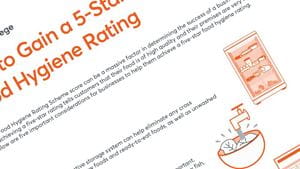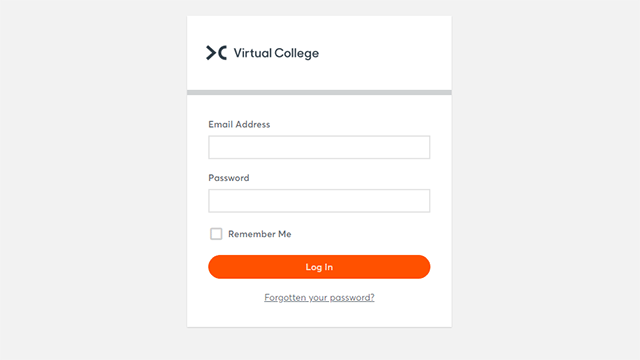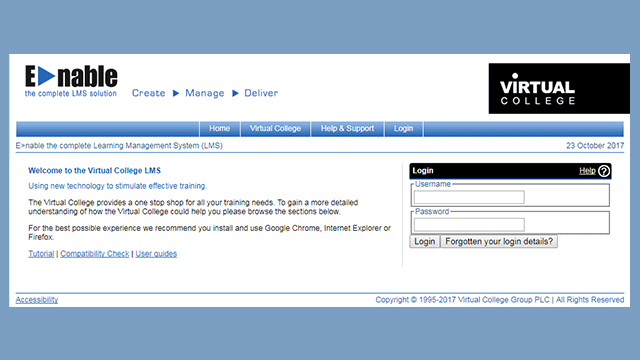How to Get a 5 Star Food Hygiene Rating
For any food business in the UK, food hygiene is of critical importance in ensuring the health and safety of your customers, and the continued success of your company.
In the UK, there are multiple food safety laws that businesses have to comply with which play a key role in helping to minimise and manage the risk associated with foodborne illnesses, such as The Food Hygiene (England) Regulations 2006, and the Food Safety Act (1990). But there are also schemes enforced by government bodies to help hold food businesses accountable for the food safety and hygiene practices they implement on a daily basis.
The Food Standards Agency (FSA) food hygiene rating scheme is responsible for rating the extent to which a food business in England, Wales, and Northern Ireland is hygienic in line with stringent requirements. Food hygiene ratings offer customers a window into the hygiene levels of a business, indicating how safe it is to eat at that particular business. So, it is in a food business’ best interest to secure the highest food hygiene rating to attract more customers and increase repeat customers.
In this article, we delve into food hygiene ratings in more detail, and share with you our tips for how to get a 5-star food hygiene rating - the very best hygiene rating you can secure for your business - to keep your customers happy and healthy, and your business thriving.
What is the Food Hygiene Rating System?
The 5-star food hygiene rating granted by the FSA is one of the most important badges of recognition that any food handling business can get. The scheme works to help customers better choose where they should purchase food in line with businesses’ health and hygiene standards.
Food hygiene ratings are awarded after a health inspection has taken place by a local authority. After this has been conducted, a business is then awarded with a rating that corresponds to their food safety and hygiene standards, with each grade being as follows:
- 0 - Urgent improvement is required to the businesses’ food safety and hygiene standards
- 1 - Major improvements are necessary to the businesses’ food safety and hygiene standards
- 2 - Some improvements are necessary to the businesses’ food safety and hygiene standards
- 3 - The businesses’ hygiene standards are considered to be generally satisfactory
- 4 - The businesses’ hygiene standards are considered to be good
- 5 - The businesses’ hygiene standards are considered to be very good
Gaining a food hygiene rating provides a glimpse into the food safety standards that a business has, including:
- How a business handles food
- How a business stores food
- How clean a business’ facilities are
- How safety in a food business is managed
- How food is prepared in a business
So, the higher your UK hygiene rating the better, as this indicates that you have good food hygiene practices, if not excellent. Ideally, you want to have a hygiene rating of 5, especially as this has many positive implications for both your customers and your business, which we detail further below.
Why is Food Hygiene Important to Consumers?
An FSA rating for food hygiene inspires consumer confidence at the most basic level. Should a business have a five-star rating for food hygiene, it lets customers know that the holder of this rating is a business to be trusted with their health and safety. It also indicates that:
- The staff are well trained in hygienic food preparation
- No food-borne contaminants are present in the workplace
- Great care has been taken to ensure that the health of those eating is of the highest priority
So, for customers, a high food hygiene rating is critical to minimising any risks posed to their health, making them more or less inclined to consume your food products, depending on the grade you’ve obtained from your food hygiene assessment.
Why is Food Hygiene Important to Your Business?
The increased trust that customers have in businesses with a food hygiene rating of 5 means that new customers who see the instantly identifiable FSA five-star rating sign in a business are more likely to choose that store over another with a lesser rating, and existing customers are more likely to return time after time.
In line with this, by securing a five-star rating for food hygiene, you’re guaranteeing the continued success of your business.
Previous data has shown that there has been a majority agreement by food businesses that a good food hygiene rating is attractive to customers, with 92% of a sample in England feeling this is the case, followed by 91% in Northern Ireland, and 90% in Wales. Also, roughly two in three businesses feel that displaying a food hygiene rating results in more customers.
So, it’s evident that by having a good food standards rating for hygiene in your business, you’re nurturing the continued success of your company so you can continue operating for years to come by strengthening your customer base.
What are Health Inspections and What Do They Look Out For?
A food hygiene inspection is conducted to offer businesses their food hygiene rating. The food safety and hygiene scheme runs with local authorities in England, Wales, and Northern Ireland, who regulate businesses in their local areas by allowing official officers to inspect businesses for their food safety and hygiene standards.
The food hygiene officers during inspection look out for three key areas of a business, which contributes to the overall food hygiene rating a business receives. These include:
- How the business keeps food safe, including the training, processes, and systems implemented to do this
- How hygienically food is handled in preparation, cooking, and storage
- The physical condition of a business premises, including its layout, cleanliness, pest control, lighting, and ventilation
It’s a legal requirement to display the food hygiene rating a business has received at its customer entrance in both Northern Ireland and Wales, but this is voluntary in England.
How to Get a 5 Star Food Hygiene Rating: The Steps and Procedures You Should Follow
So, now that you better understand the food hygiene rating system and inspections, how do you actually get the FSA’s hallowed five-star rating? We’ve got some sure-fire tips to help you on your way.
Train Your Staff
Good food hygiene doesn’t just come from the top - it starts and ends with everyone in the business. For this reason, training is one of the most important duties in the pursuit of a five-star rating.
Good hygiene practices should be taught, refreshed, and cemented with regular training sessions for managers and employees alike. The training should involve information on such processes as storage, preparation and cleaning of the workplace, and should be tailored to the needs of your business.
For a comprehensive training course on how the Food Hygiene Rating Scheme works and exactly what factors go into the decisions of food hygiene inspectors, our Achieving a Five-Star Food Hygiene Rating course features interactive and self-paced online training in the field, resulting in a digital certificate on completion.
Keep Your Workplace Clean
It should come as no surprise that cleanliness is the most important factor in achieving the necessary requirements for a 5-star rating. Antibacterial sanitiser and cleaning rolls should be kept in a memorable and convenient place in the kitchen to wipe up any bacteria contaminants or spills that might occur.
Ovens should be cleaned on a weekly basis, and fridges at the end of each month. Keep all sinks clean and free of food waste, and clean and empty the bins as regularly as possible. Cleaning responsibilities should be divided up between staff to ensure all areas are regularly checked.
Maintain Hygienic Food Preparation
One of the factors that is most regularly forgotten when aiming for a 5-star hygiene rating is the preparation areas. Cross contamination can be a major problem for businesses that handle raw foods and steps should be taken to ensure that it never happens.
Keep raw meat, seafood, and poultry on the same chopping board, and ready-to-eat foods should always be prepared separately. A vital aspect of safe preparation is hand-washing; it doesn’t matter what food is being handled, being safe is better than being sorry when it comes to hygienic hand-washing practices.
Follow HACCP in the Kitchen
HACCP stands for Hazard Analysis and Critical Control Point and it refers to a process designed to minimise health hazards in food preparation and retail. When a HACCP system and plans are put in place, analysis is carried out on potential hazards and control points are established to prevent or foresee those hazards.
Monitoring procedures are also a factor in reviewing employee corrective actions. Training in HACCP can prove exceptionally helpful in reducing the risk of bacterial and chemical contaminations in food and is an integral part of achieving the 5-star hygiene rating.
Our Understanding HACCP Course offers a comprehensive insight into HACCP which includes a RoSPA Assured instant digital certificate after 2-3 convenient hours of study. After this course, you will be able to confidently use the HACCP seven principle system to identify and respond to hazards in a food business.
Keep a Strict and Safe Food Storage System
Storing food is a necessary component in helping you secure your 5-star food hygiene rating. Foods that are at risk of cross-contamination should be stored separately. For example, in your refrigerator, raw foods should be kept away from cooked foods. This is because this can increase the risk of contamination from harmful bacteria such as E. coli or Salmonella.
Another consideration that you should make is storing your food at the correct temperature. Make sure that you regularly monitor and record the temperature of your refrigerator and freezer to ensure that your foods are stored at their correct temperatures to eliminate the risk of them going off and harbouring harmful bacteria.
Finally, store your food with its correct use by dates, even if they are taken out of their original packaging and placed into alternative storage containers. If they are beyond this date, be sure to dispose of them appropriately.
Update Your Records Regularly
Make sure that you keep a detailed and up-to-date record of anything relating to food hygiene in your business, as this will help you on your way to securing your 5-star food hygiene rating. Data that you’ll want to record will include temperature checks for your fridges and freezers, as mentioned above, as well as cleaning schedule times and other health and hygiene-related checks.
When it comes to your food hygiene check conducted by a local government official, this will act as evidence that you have been conducting safe and regular food hygiene measures for the safety of your customers. In our current digital era, consider having a digital copy of these records for ease and accessibility.
FAQs
How Often are Food Hygiene Ratings Done?
Food hygiene ratings are conducted at different timelines based on the rating your business has received. If your business receives a lower rating and is therefore deemed higher risk, it will receive a food hygiene inspection every six months. However, if your business has received a higher rating, such as a 5-star rating, and is deemed lower risk, it will typically receive an inspection every two years.
What are the Three Food Hygiene Ratings for Scotland?
Scotland uses a different food hygiene rating scheme to that of Northern Ireland, Wales, and England. This is called the Food Hygiene Information Scheme (fhis), and the three grades that form this scheme are Pass, Improvement Required, and Exempt or Awaiting Inspection.
Is Food Hygiene Rating 3 Bad?
The food hygiene rating of 3 is not deemed as bad by the FSA. In fact, it is deemed as generally satisfactory. Whilst many businesses may be happy with this, given the impact that a food hygiene rating can have on a customer’s opinions of your business, you should be striving to achieve a 5-star rating for food hygiene in your business.
Summary
Food hygiene is of paramount importance to customer health and a food business’ success. Thanks to the food hygiene rating scheme, there is more transparency about a business’s food hygiene practices, which offers customers the ability to confidently choose where they eat so that they can protect their health. This also importantly holds businesses accountable for having better food hygiene standards in their daily operations.
Are you looking to learn more about, or train your staff in, food safety and hygiene? Our range of food hygiene and safety online courses at a variety of different levels will help you build understanding and skills from the ground up in how to maintain excellent food hygiene standards in a business.

























































